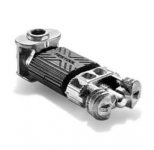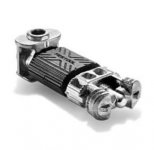I'm interested in the possibility of using the Domino Jointing System to hold in treads on a wooden spiral staircase.
I cannot find any data on their strength or range of pull out forces. The Festool website simply says "Extremely stable with dowel and clamping element for strong connections. High pulling and tightening distance. Extremely high pull-out and load forces"
I'm trying to find out what do Festool rate as an "extremely high pull-out force", is that 100N or 10,000N? I understand there is probably considerable variance depending on the variety of timber, but even a general range for a few conevntional joinery timber types would provide a valuable indication.
The website page I am looking at is this one:
"https://www.festool.com/Products/Accessories/Pages/Detail.aspx?pid=201827&name=Connector-for-DOMINO-joining-machine-EV-32-Set"
Having contacted Festool UK, who then contacted HQ (Germany I assume), they say
"We have deliberately not listed strength data, because they are always dependent on various factors such as the type of wood, construction or design of the connection.
For such statically loaded connections as in staircase construction one needs an approval. Unfortunately, we do not have them.
To hold the treads on a wooden spiral staircase, the DOMINO connector is exposed to dynamic forces.
For this application the Domino is not to use"
I'm a bit confused that Festool HQ seem to be saying that the Domino Connector is not suited to dynamic forces / loading, apart from a wooden sculpture, there are not many applications where such connectors are not dynamically loaded in some way or another in use.
I'm also not expecting them to in any way guarantee my design, just provide some figures to illustrate their "Extremely high pull out force" claims they make for the connector itself. (The method of use for each connector type is pretty prescriptive) I could then use that info with a significany Factor of Safety to see if the kind of loading I'm anticipating would even be feasible. (I'm not expecting Festool to provide any approval for my design as they seem to suggest, that woud be equivalent to expecting the maker of a rivet to approve the bridge it might be used in)
So, I'm wondering has anyone tested the pull out force that Festool describe as "Extremely high"? There is someone doing, by his own admission, a very unscientific demo of the strength here :
Many Thanks in advance for any info.
Stephen
[attachimg=1]
I cannot find any data on their strength or range of pull out forces. The Festool website simply says "Extremely stable with dowel and clamping element for strong connections. High pulling and tightening distance. Extremely high pull-out and load forces"
I'm trying to find out what do Festool rate as an "extremely high pull-out force", is that 100N or 10,000N? I understand there is probably considerable variance depending on the variety of timber, but even a general range for a few conevntional joinery timber types would provide a valuable indication.
The website page I am looking at is this one:
"https://www.festool.com/Products/Accessories/Pages/Detail.aspx?pid=201827&name=Connector-for-DOMINO-joining-machine-EV-32-Set"
Having contacted Festool UK, who then contacted HQ (Germany I assume), they say
"We have deliberately not listed strength data, because they are always dependent on various factors such as the type of wood, construction or design of the connection.
For such statically loaded connections as in staircase construction one needs an approval. Unfortunately, we do not have them.
To hold the treads on a wooden spiral staircase, the DOMINO connector is exposed to dynamic forces.
For this application the Domino is not to use"
I'm a bit confused that Festool HQ seem to be saying that the Domino Connector is not suited to dynamic forces / loading, apart from a wooden sculpture, there are not many applications where such connectors are not dynamically loaded in some way or another in use.
I'm also not expecting them to in any way guarantee my design, just provide some figures to illustrate their "Extremely high pull out force" claims they make for the connector itself. (The method of use for each connector type is pretty prescriptive) I could then use that info with a significany Factor of Safety to see if the kind of loading I'm anticipating would even be feasible. (I'm not expecting Festool to provide any approval for my design as they seem to suggest, that woud be equivalent to expecting the maker of a rivet to approve the bridge it might be used in)
So, I'm wondering has anyone tested the pull out force that Festool describe as "Extremely high"? There is someone doing, by his own admission, a very unscientific demo of the strength here :
Many Thanks in advance for any info.
Stephen
[attachimg=1]





